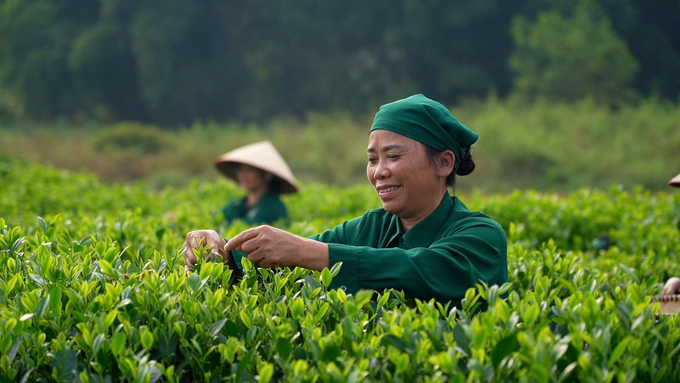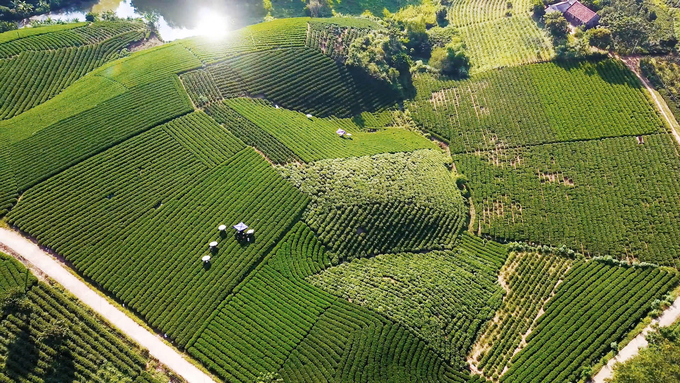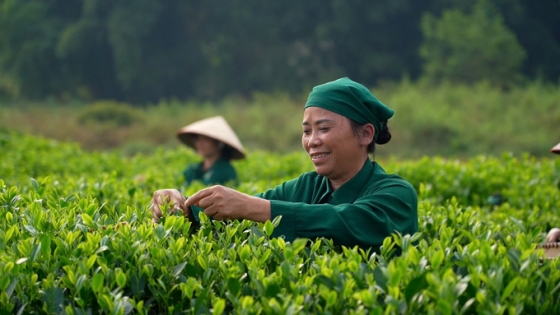(VAN) As consumer demand shifts toward specialty and high-quality teas, innovation and ‘premiumization’ are key drivers for market expansion.

With an output of 214,300 tons in 2022, Vietnam ranks 5th globally in tea production. Photo: HT.
China leads in output, Vietnam ranks 5th
According to FAO data, global tea production – including black, green, and instant teas – reached 6.7 million tons in 2022, with China’s production expansion fueling much of this growth.
China’s tea output has been rising at an annual rate of 5.9%, from 1.92 million tons in 2013 to 3.34 million tons in 2022, propelled by increasing domestic demand and heightened health awareness among Chinese consumers. As the world’s largest tea producer, China accounts for nearly 50% of global tea production, followed by India with a 20.5% share. India’s tea production grew from 1.35 million tons in 2021 to 1.37 million tons in 2022.
In 2022, Vietnam ranked fifth globally, producing 214,300 tons of tea. Vietnam is quickly establishing itself in both black and green tea production. Known for its light, balanced flavor, Vietnamese green tea is especially popular. Vietnam also boasts unique varieties like lotus tea and jasmine tea, where tea leaves are scented with flowers.
Surge in demand for specialty and premium teas
Tea consumption is shaped by multiple factors, including price, income, age, education, occupation, and cultural background. With a growing preference for healthy, natural beverages, demand for specialty and premium teas is soaring, opening up new opportunities in the global tea market.
Over the past decade, international tea prices, tracked by the FAO composite price index a weighted average of black teas, including crushed, torn, and curly (CTC) and Orthodox types, have remained stable.
The FAO composite tea price index rose by 14.5%, increasing from $2.44/kg in 2021 to $2.80/kg in 2022. This surge was driven by strong demand and tighter supplies from Sri Lanka. However, after peaking in 2022, tea prices fell by 9% in 2023 to $2.54/kg due to higher supply, lower demand, and a shortage of high-quality tea. Additionally, the global economic downturn has further pressured prices by reducing both domestic and international demand, resulting in a surplus in the tea market.
Other factors influencing international tea prices include market access, the potential impacts of pests and weather on production, changes in input costs, exchange rates, and shifts in market structure.
Factors contributing to the increase in tea consumption include rising per capita income in major tea-producing countries and growing awareness of the health benefits associated with tea.

Innovation and “premiumization” are key drivers for market expansion.Photo: HT.
Export projections
In terms of exports, global black tea exports are expected to reach 1.81 million tonnes by 2032. Growth is anticipated across all major exporting countries, with Kenya leading the way with an average annual growth rate of 1.4%. India and Sri Lanka are also projected to see average increases of 1.1% and 0.7%, respectively. Over the next decade, India is expected to become the second-largest exporter of black tea, surpassing Sri Lanka.
Green tea exports are projected to reach 574,000 tonnes by 2032, largely driven by increased sales from China and Vietnam. China is expected to maintain its dominance in the export market, with exports reaching 429,919 tonnes, accounting for 75% of global green tea exports. Vietnam is anticipated to export 84,409 tonnes, followed by Japan with 14,320 tonnes and Indonesia with 6,244 tonnes.
Agriculture News | Agri Products Price



